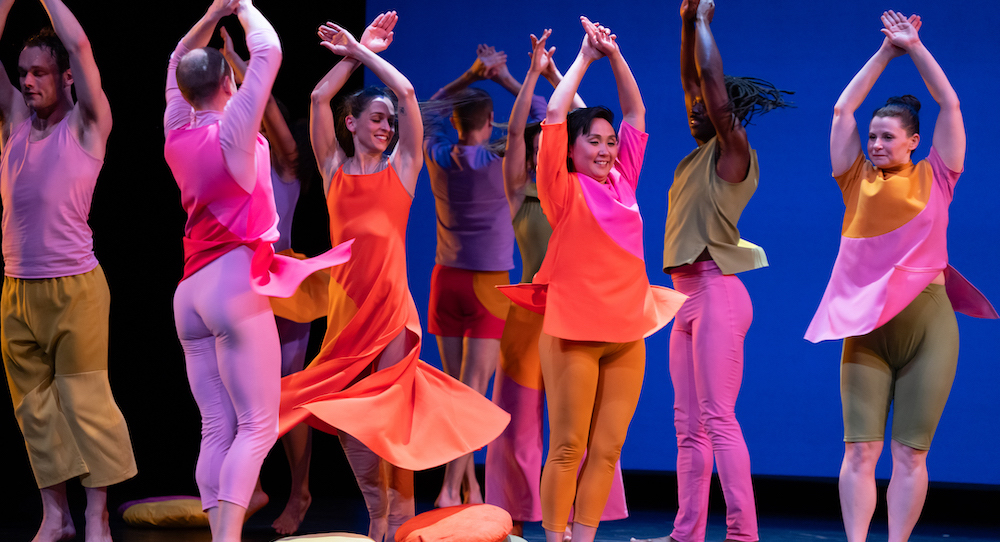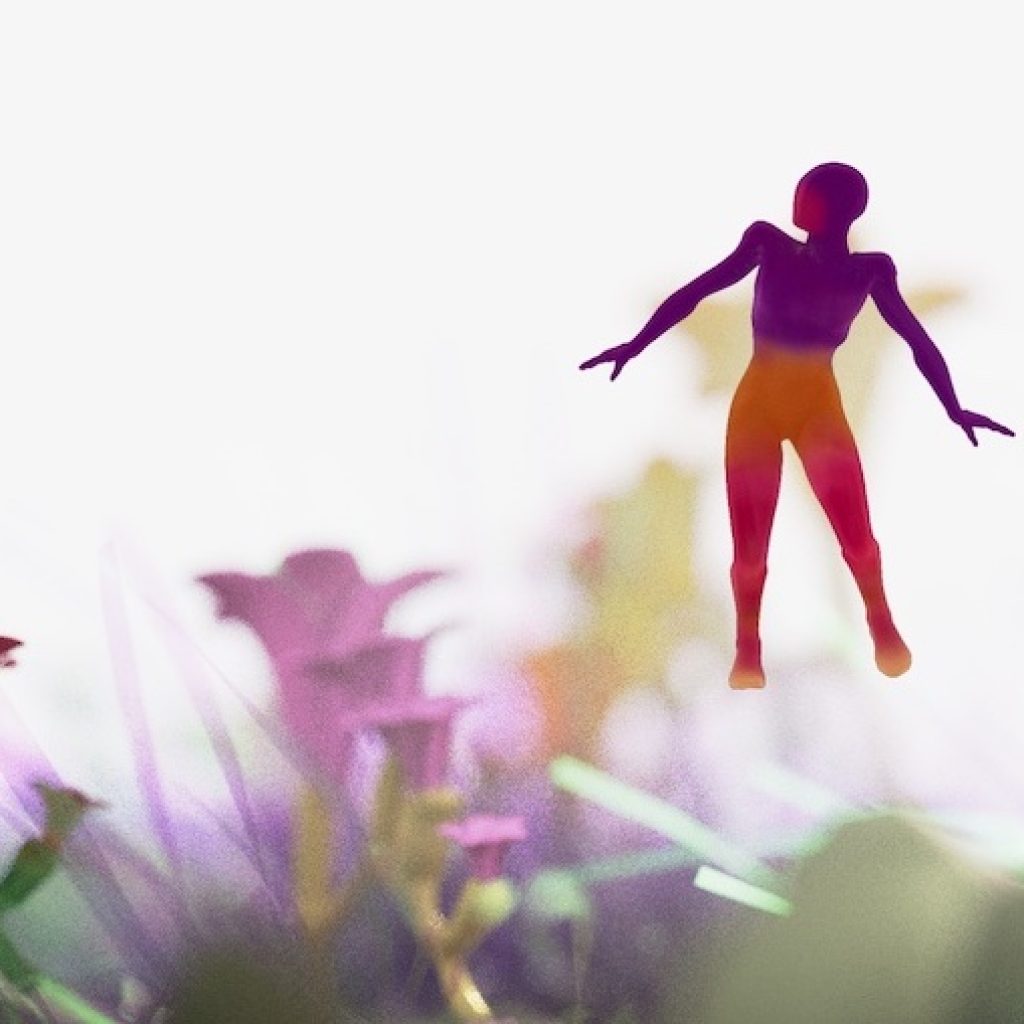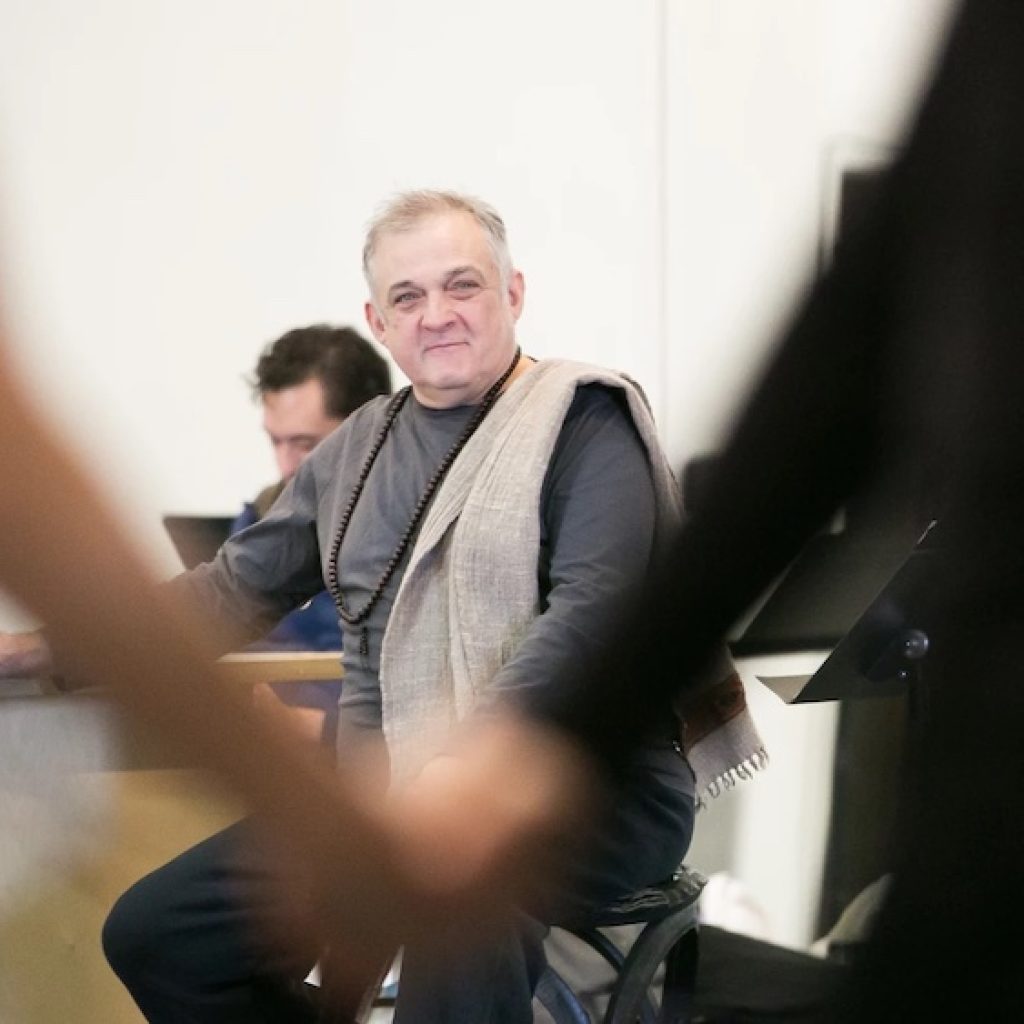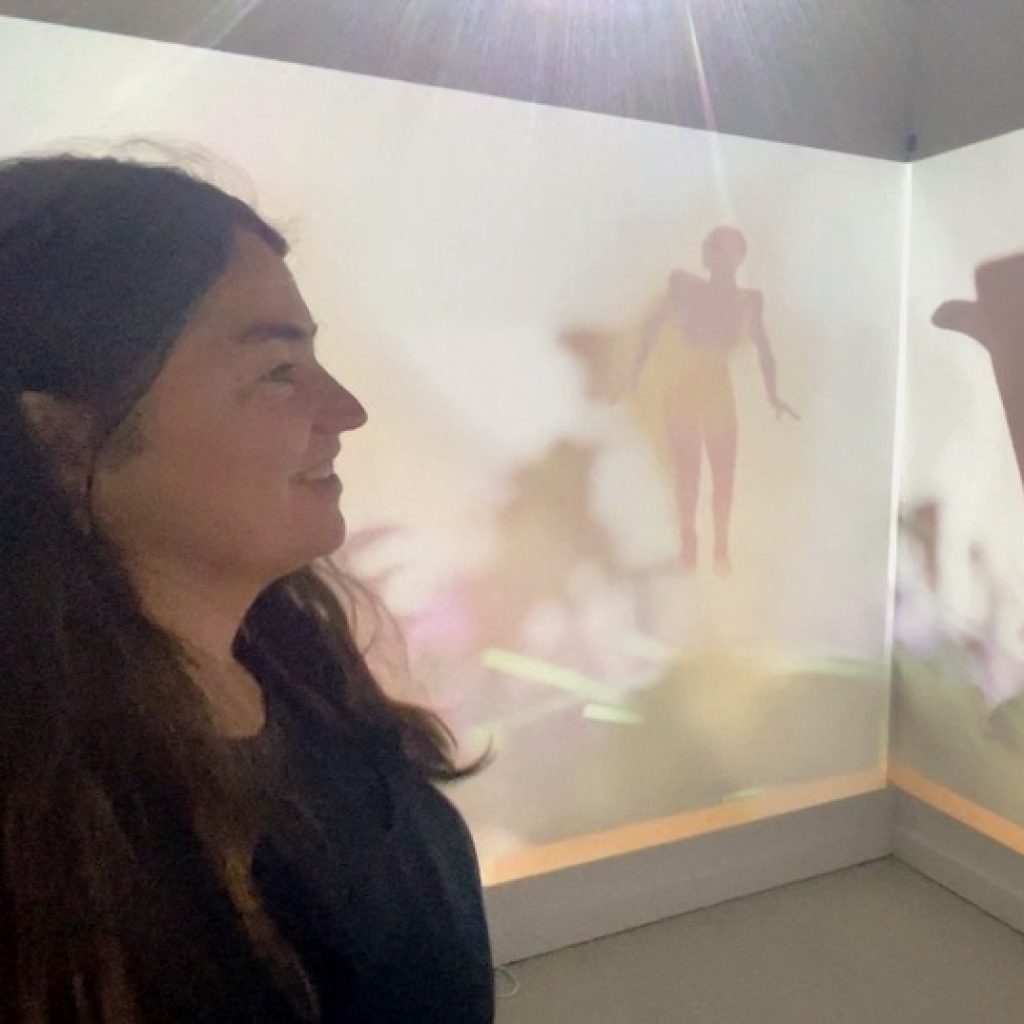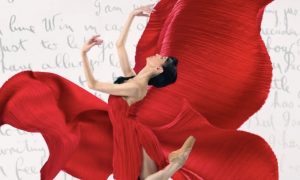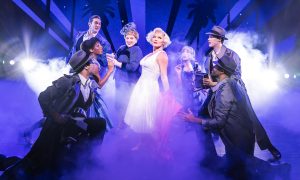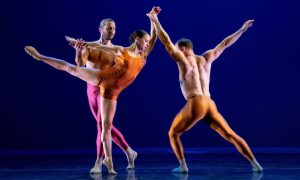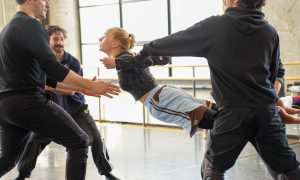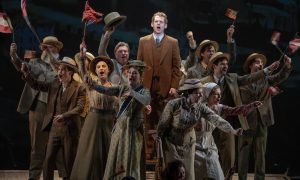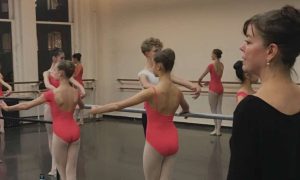You’ve heard it before: most people don’t move their bodies enough these days. Office workdays are long, and the television calls once they’re done. (We all need to decompress, right?) Could the concert dance industry be part of making positive change there? Through initiatives like the partnership between Breakthru and Mark Morris Dance Group (MMDG), that’s already happening.
Breakthru creates two-minute movement breaks that anyone can do at their desk, at any point in their day. Their collection now includes multiple interactive breaks that lead participants in movement inspired by Mark Morris’ vocabulary, anywhere they access the internet (with more breaks likely on the way). Dance Informa speaks with Mark Morris and Breakthru Founder Melissa Painter to learn more about the partnership, what it’s already catalyzed, and where it all goes from here. Let’s move!
A partnership comes to fruition
Why did Painter create Breakthru? “There’s a slow-motion disaster happening all around us… our sedentary behavior is linked with every chronic condition out there. And technologists are creating things that make us more like robots and less human,” she affirms.
Yes, there’s been some resistance from the kind of people who “think that their bodies are for walking their brains around.” She responds to it by noting how “everyone has had a good idea when taking a walk,” for one. For two, she calls people to observe their breath while checking emails. For most, it’s short and shallow – which established science tells us is not conducive to whole-person health (something Morris also emphasizes). Clearly, embodiment at work matters…and is sadly in short supply.
Breakthru seeks to meet that need: through bite-sized, science-backed movement breaks – those that people all over the world are now experiencing through Slack, Google Chrome and Microsoft Teams. Painter has also been a lover of Mark Morris’ work since she first experienced it, when she was only a child. Yet, that personal passion and her professional mission only intersected when Breakthru’s data showed that individuals working for MMDG were using the program. In an amazing synchronicity, just as people with Breakthru reached out to MMDC, the same happened vice-versa. The enthusiasm to partner was mutual.
Morris notes that when COVID lockdowns hit, he certainly wasn’t the first lining up to create dance films; “I’m a theater artist.” The two dimensions of virtual meetings felt all too flat. Zoom rehearsals and classes could be plain “deflating.” Yet, if the company wanted to keep its work and impact alive, it had no choice but to translate it to virtual media.
The company pivoted to offer its Dance for Parkinson’s Disease program virtually. People all over the globe participated, demonstrating what the scale of such an offering could be. The ground was fertile for something like the partnership with Breakthru, long after lockdowns lifted and we could move together in space once again. “We’ve been doing what Breakthru is after for a long time…just in different media,” Morris says with a smile.
Painter agrees; as far as she sees it, the two companies have an aligned ethos of movement for all – not just the most thin, young, athletic and well-resourced among us. “At Breakthru, we want to convey that there’s no one ‘right’ way to look while moving. Mark conveys that in his work,” she says, with a smile of her own. “This wasn’t about wanting to work with any dance company…we specifically wanted to work with Mark’s company, because of their philosophy of movement and spirit of accessibility.”
Dancing at desks
All of that is evident in the final microbreaks that they’ve created. Motion capture technology recorded the dancers moving through adapted forms of Morris’ choreography. As in all of Breakthru’s breaks, the person is anonymous, only their physical outline legible – in the spirit of there being as many “right” ways to move as there are people moving. Morris, for his part, affirms that “that’s just the way we work. I trust the dancers to extract and distill my movement” in ways that resonate with their strengths and feel right in their body.
Additionally, as with all Breakthru breaks, “users choose the break based on how they want to feel at the end,” Painter explains. The Grand Duo breaks is a “Centered Microbreak,” L’Allegro a “Confident Microbreak,” and The Look of Love a “Joyful Microbreak.” Part of that aim toward a particular mood is a specific color palette – also part of each Breakthru break. With the Look of Love breaks, for example, Breakthru graphic artists converted the warm colors of the costumes for the work (by Isaac Mizrahi) into the break’s design.
There are many lush flowers that shine in those colors. The soundscape is filled with bird calls, strong winds, and flowing water. That’s all quite intentional, too. “We’re trying to give people a connection to nature during their workday,” Painter says – which, she argues, is another thing sorely lacking in modern professionals’ lives, to detrimental effects on whole-person health. Morris and Painter underscore how concert dance and dance pedagogy reflect such connection to nature: through imagery, kinetic qualities and more.
Why it matters
Morris couldn’t be clearer about why what Breakthru is doing matters. “We’re on our phone all day long, and it’s physically dangerous, the way we curve over for hours…not to mention the isolation and loneliness.” Yes, movement and embodiment matter. Above and beyond that, can dance-inspired movement offer something which push-ups and sit-ups can’t?
“Through our research, we spoke with thousands of movement experts. They were clear that the lack of creative, generative movement in people’s lives is extreme,” Painter notes. “There’s nowhere near enough folk dancing, social dancing, dancing in community…and free play!”
No, people moving along with these breaks aren’t necessarily going to get the “technique” right, she affirms. Yet, what they are doing is creating something — their own version of the movement, according to their body’s capacities and needs. That is a form of play in and of itself, Painter believes. The testimonials from worldwide users validate that; “they’re saying things like ‘I feel like I’m on the playground again!,'” Painter adds. We may think that, as adults, we don’t need that in our lives – yet our daily experience can be much richer for it.
“After such incredible reception from the first set of breaks, we hope to deepen this collaboration,” Painter shares. As part of her “massive dreams and visions” for the company, she shares, she’d love to explore longer classes and group formats – perhaps something that MMDG could be part of. “We’d also love to stretch into serving more generations, all ages of people…which reflects what Mark has done with his company.”
Painter maintains that the hunger for what they offer is out there. “People have an innate desire to express themselves through movement and to connect with other people. We see it across the globe, throughout time, and through human development,” she believes. “It’s a huge reason why all of these social media platforms, for all of their harms, went viral in the first place…people shared dance.”
Morris highlights the place of creativity without judgment, without unnecessary expectations. “We can let go of the idea that it’s ‘serious’ or ‘frivolous’, ‘hard’ or ‘easy’….that doesn’t have to matter.”
For more information, visit breakthru.me.
By Kathryn Boland of Dance Informa.


